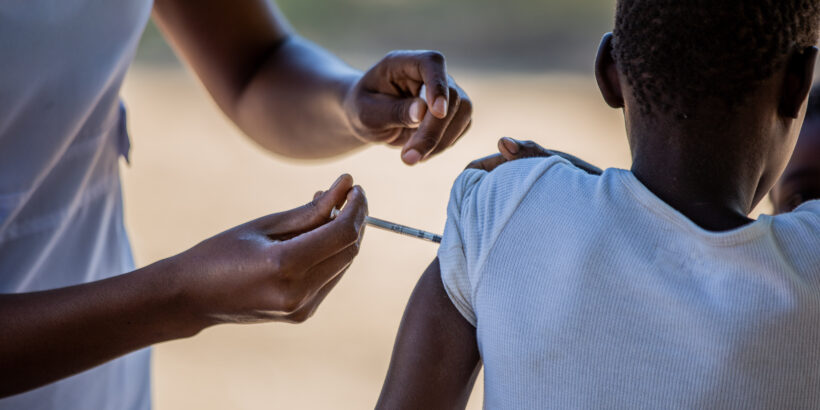Zimbabwe has faced recurring droughts in recent years, leading to severe water shortages. As a result, many Zimbabweans rely on alternative water sources, often resorting to shallow water that may contain harmful bacteria, including typhoid. For more than a decade, typhoid outbreaks in Zimbabwe have occurred alongside droughts due to the lack of access to safe water and sanitation facilities. Inadequate water, sanitation, and hygiene (WASH) infrastructure increases typhoid risk.
Zimbabwe is a typhoid-endemic country with high rates of drug-resistant typhoid, further complicating treatment when natural disasters like droughts occur. Drug-resistant typhoid strains force the use of more expensive, less available, and harder-to-use antibiotics to treat typhoid.
In 2019, Zimbabwe conducted an outbreak response campaign with typhoid conjugate vaccine (TCV) in response to a massive increase in typhoid cases and transmission. More than 318,000 people were vaccinated. In 2021, Zimbabwe introduced TCV into its routine immunization program to ensure children are protected from typhoid. TCVs are safe and highly effective at preventing typhoid illness and transmission.
El Niño-induced drought
Recent droughts across a large part of Southern Africa, triggered by El Niño—a global climatic phenomenon that typically leads to warm and dry conditions—have resulted in water scarcity and crop failures in Zimbabwe. In April, Zimbabwe declared a national disaster due to a drought caused by El Niño and the lingering effects. Many boreholes in rural areas of Zimbabwe have broken or dried up completely; water production is insufficient to cover the needs of the population in urban areas. A recent assessment indicates that only half of the households have access to safe water within proximity to their homes.
Drought increases the risk of typhoid
Drought causes water sources to become shallow or dry up completely, which makes it easier for bacteria like typhoid to contaminate water, especially in warmer climates. With limited options available, families may be compelled to use contaminated water sources for cooking, cleaning, or even drinking, which increases the risk of infection. The El Niño-induced drought resulted in an extremely poor harvest. Over 60 per cent of the crops planted this season were lost, leaving millions at risk of acute hunger.
It is crucial to prioritize preventive measures, such as increasing coverage of TCV, to mitigate the risk of outbreaks and protect children. This approach can safeguard children against typhoid, even amid droughts. Encouragingly, TCV protects against typhoid transmission, a crucial tool when rates are higher in times of potential outbreaks.
While preventing the adverse climatic impacts of El Niño-induced droughts and improving the availability of safe water and adequate sewage facilities require long-term investment, we can mitigate the increased risk of typhoid during droughts by strengthening TCV coverage in Zimbabwe’s routine vaccination program. All 9-month-old children can receive TCV during their well-child visits. Increasing TCV coverage protects children now and when future natural disasters strike.
Photo: A child receives TCV during Zimbabwe’s introduction campaign. Credit: TyVAC/Kundzai Tinago



